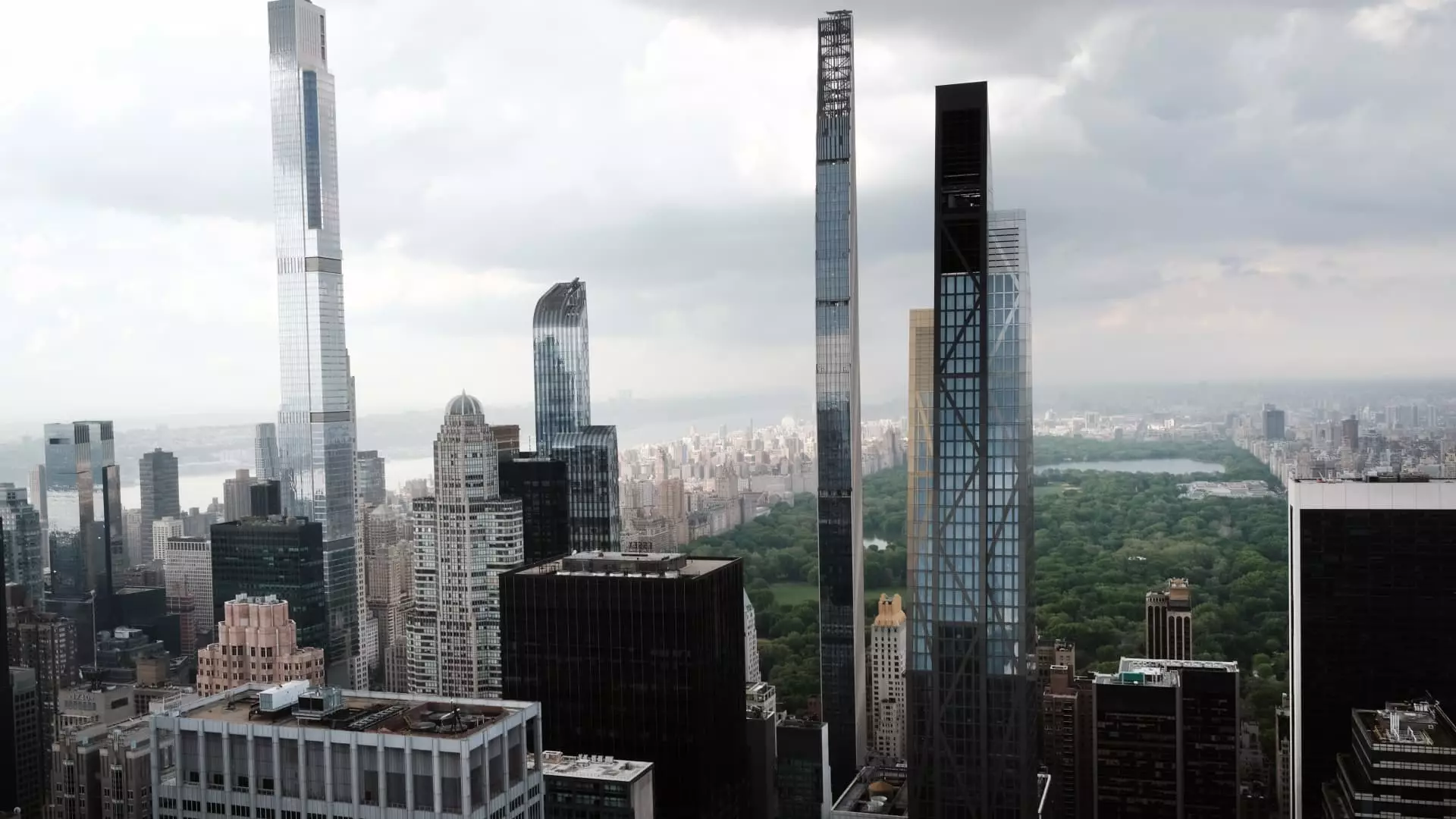Manhattan’s apartment market has witnessed a remarkable rebound, showing a 29% increase in sales in the first quarter of the year compared to the same period last year. This upsurge reflects a significant trend where affluent individuals are increasingly viewing real estate as a safe haven amid the erratic fluctuations of stock markets. With 2,560 apartment transactions recorded—up from 1,988 a year prior—it’s clear that Manhattan real estate is not merely bouncing back; it’s on an upswing that highlights the mindset of the wealthy in uncertain economic times.
The total value of real estate transactions soared to an astounding $5.7 billion, a whopping 56% increase year-on-year. This trend is hardly surprising, as high-net-worth individuals seek out luxury properties to insulate themselves from volatility. It is a compelling reflection of how economic dynamics can redirect financial behavior, emphasizing the allure of tangible assets over ephemeral stock certificates. The real estate market in Manhattan serves as a mirror to societal behavior, indicating that when the going gets tough, the affluent turn their eyes towards structural investments.
Luxury Properties Leading the Charge
The luxury segment of the Manhattan market saw a phenomenal leap, with apartments priced over $5 million skyrocketing by 49%. This segment, especially properties priced at $20 million or more, enjoyed its strongest first quarter since 2019, showcasing a robust appetite among ultra-high-net-worth buyers. Unlike the broader market movements that impact most buyers’ decisions, the ultra-wealthy remain somewhat insulated due to their typical preference for all-cash transactions. In fact, 58% of sales in this quarter were all-cash deals, with an astronomical 90% in the premium bracket above $3 million.
This shift illustrates not just a financial freedom, but a lifestyle choice among the elite. These transactions are not merely sales; they signify a vision for the future—a desire for luxury in an increasingly turbulent world. When the percentage of all-cash transactions is so high, it indicates an emerging consciousness among investors who seek not just utility but also a legacy.
The Mid-Market Struggles
In stark contrast to the luxury sector’s vibrancy, the mid-market segment—representing properties priced between $1 million and $3 million—experienced a significant downturn, with signed contracts dropping by 10%. Meanwhile, properties at the lower end of the scale, priced between $500,000 and $1 million, exhibited stronger performance. This divergence in performance raises crucial questions regarding market accessibility. Are we observing the emergence of a bifurcated market where only the wealthy can afford to thrive, while the middle class struggles?
This becomes all the more pressing when combined with the concept of the “boomerang wealthy.” The affluent who fled Manhattan for more hospitable environments during the pandemic are now eyeing a return, fueled by a blend of nostalgia and opportunity. Nonetheless, this pattern reveals a widening gap in socio-economic accessibility within one of the most vibrant cities in the world. The disparity not only highlights market fragility in the mid-range but casts a long shadow over the promise of the American Dream for many aspiring homeowners.
Generational Wealth: A Double-Edged Sword
Emanating from a “great wealth transfer,” where trillions of dollars are passing from baby boomers to their heirs, this recent surge in sales also signifies a profound socio-economic shift. Many of today’s buyers are utilizing funds from trusts or family offices to secure their real estate legacy, focusing on acquisition for long-term benefit. This trend raises questions about the sustainability of such a market. It can foster exclusivity, where the richest secure not just property but an unassailable future, while others are left in the wake of this financial tide.
Real estate agents like Cindy Scholz from Compass underscore the notable rise in activity from family offices, emphasizing their pursuit of real estate as not just investment, but preservation of wealth. The echoes of this generational wealth activity suggest that the market will continue to thrive but might also deepen existing inequalities. If the cycle of wealth continues to concentrate within a select few, what does the future hold for economic diversity within the vibrant tapestry of New York?
While Manhattan’s real estate market appears to be thriving, buoyed by affluence and investment strategies, it is essential to question whether this healthy growth reflects a superficial gain within an overall socio-economic landscape that is shifting toward more significant divides. The interplay of wealth, property, lifestyle choices, and market dynamics paints a complex picture, what remains to be seen is whether Manhattan can adapt and ensure more inclusive opportunities as it rises like a phoenix. The trends we observe today may be paving an uncharted path, asking all the right questions as they herald in the next age of real estate and urban living.

